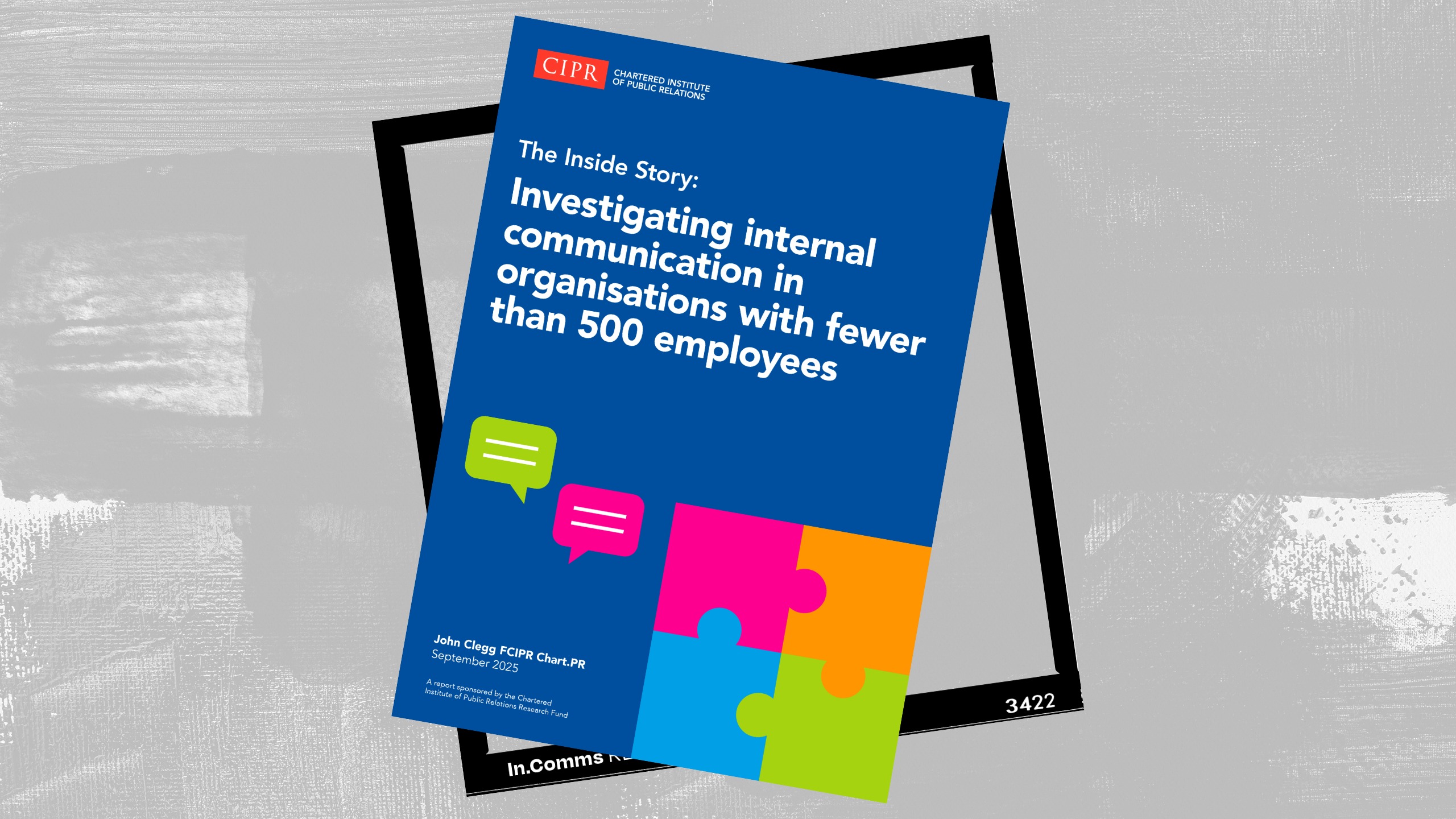Only a little over half (58 per cent) of internal communication [IC] professionals and leaders in organisations think that their IC is effective, according to a new report released by the CIPR today.
It outlines the constraints on IC in organisations with up to 500 employees, with a lack of investment one of the major challenges.
The report draws on the views of more than 70 IC professionals and senior staff at UK organisations across the private, public and charity sectors, one in five of which (19 per cent) said their organisation does not have any IC resources.
The larger the organisation’s employee headcount, the more likely they are to have a full-time employee dedicated to internal communication, according to the report. While a third (33 per cent) of organisations of between 51 and 100 people have at least one full-time IC employee, that rises to 91 per cent at organisations of between 401 and 500 people.
The report states there is a “threshold beyond which resources are dedicated to internal communication” and that “once an organisation employs between 100-200 employees, it generally starts to have dedicated internal communication resources”.
However, it describes how IC teams are “stretched and under-resourced”.
While 92 per cent of respondents cite building trust in leadership as one of the key focuses of IC in their organisation, only 62 per cent believe this is being done well.
And although 82 per cent of respondents who have an IC resource say that it is involved in supporting change projects in their organisation, only 59 per cent say it is being done well.
The report’s author, IC consultant John Clegg, commented: “This research highlights the tipping point many smaller organisations reach as they grow, when informal communication no longer works and clarity begins to slip through the cracks. Beyond roughly 150 people, word-of-mouth and goodwill can’t sustain a shared sense of direction.”
He added that, at this stage, many IC professionals are having to juggle “a wide range of demands with limited time, budget and support” and this results in IC becoming “reactive rather than planned”.
IC needs to be treated as a core business function, he argued. “Investing in structure, measurement and skills will help organisations build trust, strengthen culture and give colleagues the clarity they need to perform at their best,” Clegg said.
Responding to the report’s findings, CIPR president Advita Patel said that many smaller organisations value IC but “lack the structure, skills, or leadership support to make it work strategically”. She added: “Our hope is that this work helps smaller organisations see internal communications as the basis for their employer brand and the glue that ties culture and performance together.”
The CIPR has released new guidance for IC in smaller organisations, drawing on the issues raised in the report.
The guidance stresses the importance of going above and beyond merely hiring an IC professional and having a “budget beyond salary”. It states: “Funding is needed for tools, platforms, and external support. Financial ability to invest budget for internal communication may be a challenge, but it is essential.”
It suggests making the most out of existing digital platforms rather than seeking expensive new ones.
The guidance also advises having “a simple, manageable framework that can be consistently maintained within your capacity” which will be “far more effective than numerous underutilised platforms”.
IC professionals in smaller organisations also need to try to get “buy-in” from the chief executive or senior leadership. “Without this, internal communication struggles to get prioritised, and funding will be harder to secure,” it warns.
Those in IC should be clear about what they “can and cannot deliver with available resources” and use channel frameworks and IC strategy to help “set boundaries with colleagues”.
The guidance states: “With limited resources, the goal is not to do everything, but to do the right things well.”
And it recommends a “focus on meaningful metrics that demonstrate business impact rather than vanity measures like clicks and open rates”.

